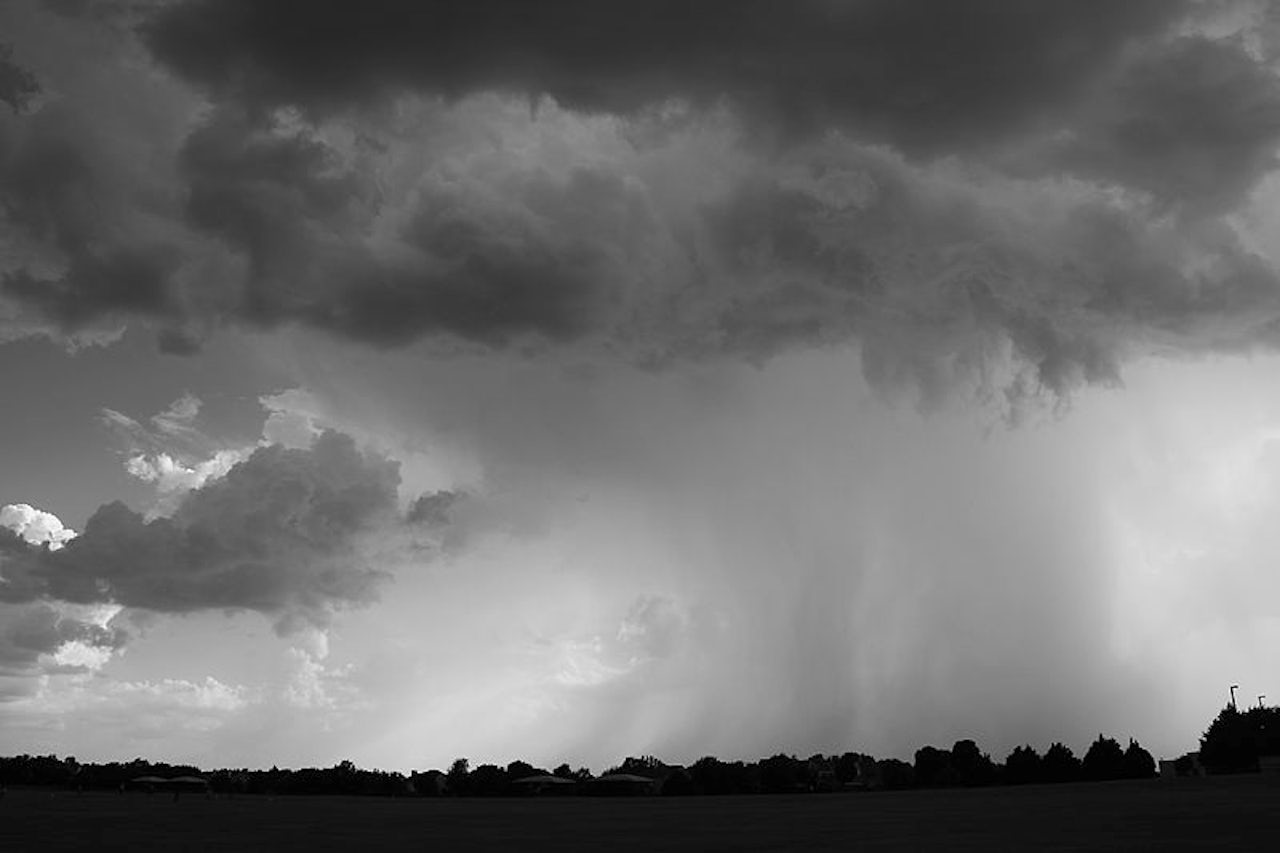Drought and aridity driven by climate change is heightening the market for cloud seeding. Just this week, China announced a plan to place thousands of cloud seeding structures across the Tibetan plateau, which has been drying out as a result of climate change. The cloud seeding devices would account for 620,000 square-miles of land, making the largest project of its kind in human history.
Picture hundreds, perhaps thousands, of multi-story metallic structures dotting a flat, desert landscape. The virus-like structures have long, silver legs, a hefty central box several feet in the air, and a tower hoisting up a cylindrical propane burner weighing thousands of pounds.
These structures freeze silver iodide—an the inorganic compound—into microscopic crystals, shoot them into the atmosphere, and hope that rain-bearing clouds form from them. This is known as “cloud-seeding.”
The practice has been around since the 1940s, but there’s still little conclusive evidence about the effectiveness and safety of cloud seeding, especially on a large scale, which is why it’s generally been done in small, experiments.
Neither the timeline for installing all of these structures in China nor the final number of these ground-based cloud seeding structures have been announced. But there are already over 500 experimental cloud seeding devices across Tibet and other mountainous areas such as Xinjiang.
Cloud seeding devices release carbon dioxide vapor, which contributes to the effects of climate change even as they are supposed to be treating the effects of climate change. (The exact energy and greenhouse gas output of the devices that would be used is not known.)
One of the most urgent ambiguities about cloud seeding is the effect that silver iodide could have on living things. The U.S. National Library of Medicine notes that the compound has no known “ill effects” on people, although people’s “hands may have remained yellowed for weeks” after being exposed to it.
Sebastián Sánchez-Fortún, a toxicologist at Madrid's Complutense University who has studied how silver iodide affects ecosystems, said in an email the cloud seeding agent may have a moderate negative effect on land and water-based life if it’s applied excessively and over a long period of time. However, he noted that his findings were based in a laboratory, which may not completely reflect real ecosystems.
“It seems clear that in the short-term, the use of silver iodide provides high benefits,” he said. “However, I think that additional, and especially independent, studies are necessary to know the medium and long-term risk associated with the use of silver iodide to combat water shortage.”
But it’s also unclear whether cloud seeding devices reliably result in clouds. According to an email from Bart Geerts, the head of the University of Wyoming’s Atmospheric Science program who has written about cloud seeding, there’s simply not enough research about the cloud seeding to know whether China’s investment will pay off.
“There is potential for such an operation to significantly increase precipitation,” he said. “But at the same time, the impact of this seeding is not understood. Without proper guidance, I imagine that the entire operation will be relatively inefficient.”
Jeffrey French, a professor of atmospheric science at the University of Wyoming who has written about cloud seeding, said in an email that existing studies about cloud seeding only suggest that small improvements in rainfall may possible under extremely particular and specific conditions. Because of that, it’s impossible to say how cloud seeding would play out across a massive Tibetan landscape.
“There has been very little published in the scientifically-reviewed literature regarding efficacy of cloud seeding throughout China, despite rather bold claims made by some within the Chinese Weather Modification Programs,” he said. “That is not to say it does not work or that it is not effective, but rather that it is difficult or near impossible to judge from the outside.”
China’s incentive to pursue geoengineering initiatives, such as region-wide cloud seeding, is not surprising. The country has been trying to balance being the world’s largest national emitter of greenhouse gases and national risks associated with climate change with its rapidly developing economy and lofty growth goals. Yet with little conclusive evidence about the effectiveness and safety of cloud seeding on such a large scale, its ambitious investment into the practice represents a response with significant risk.

